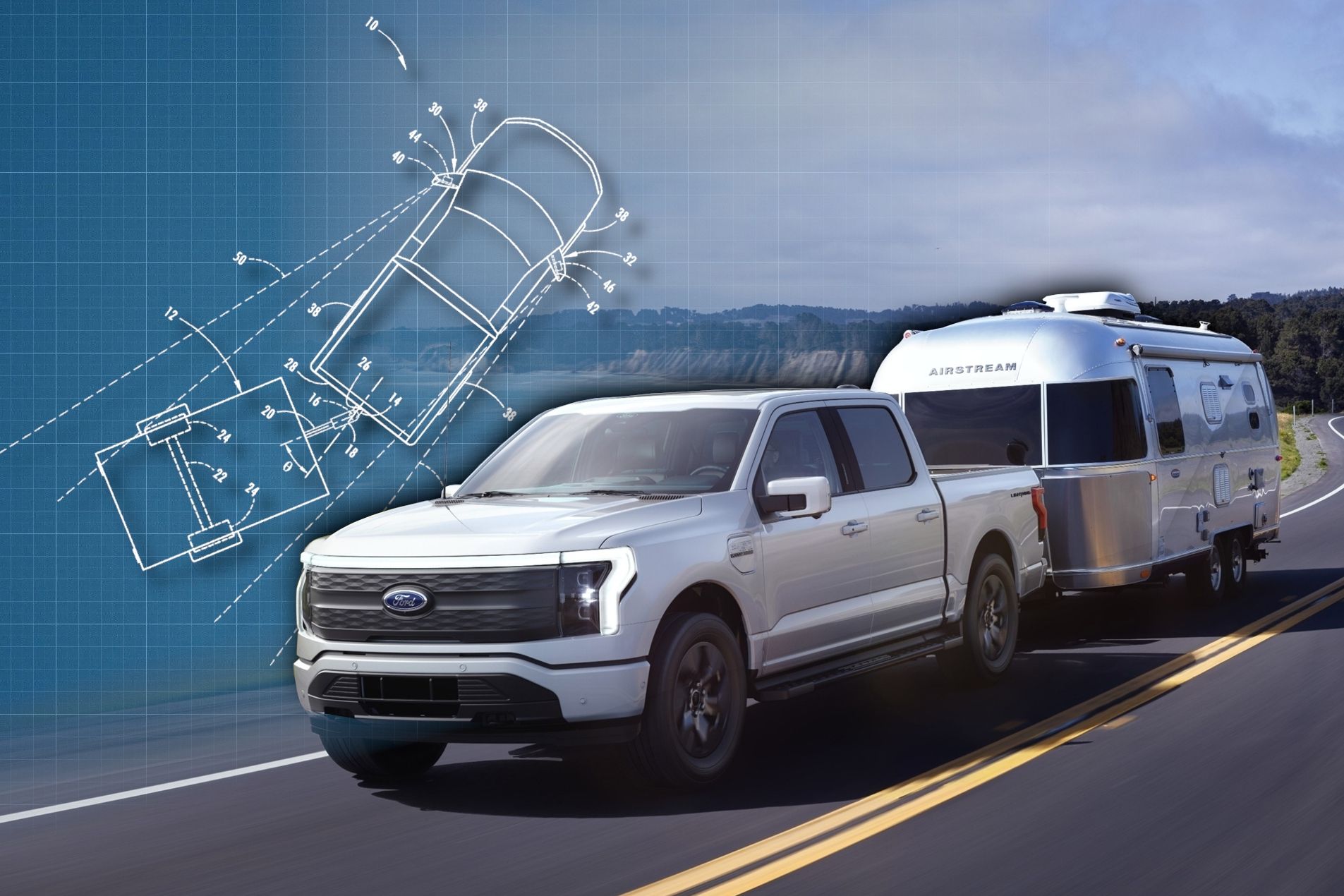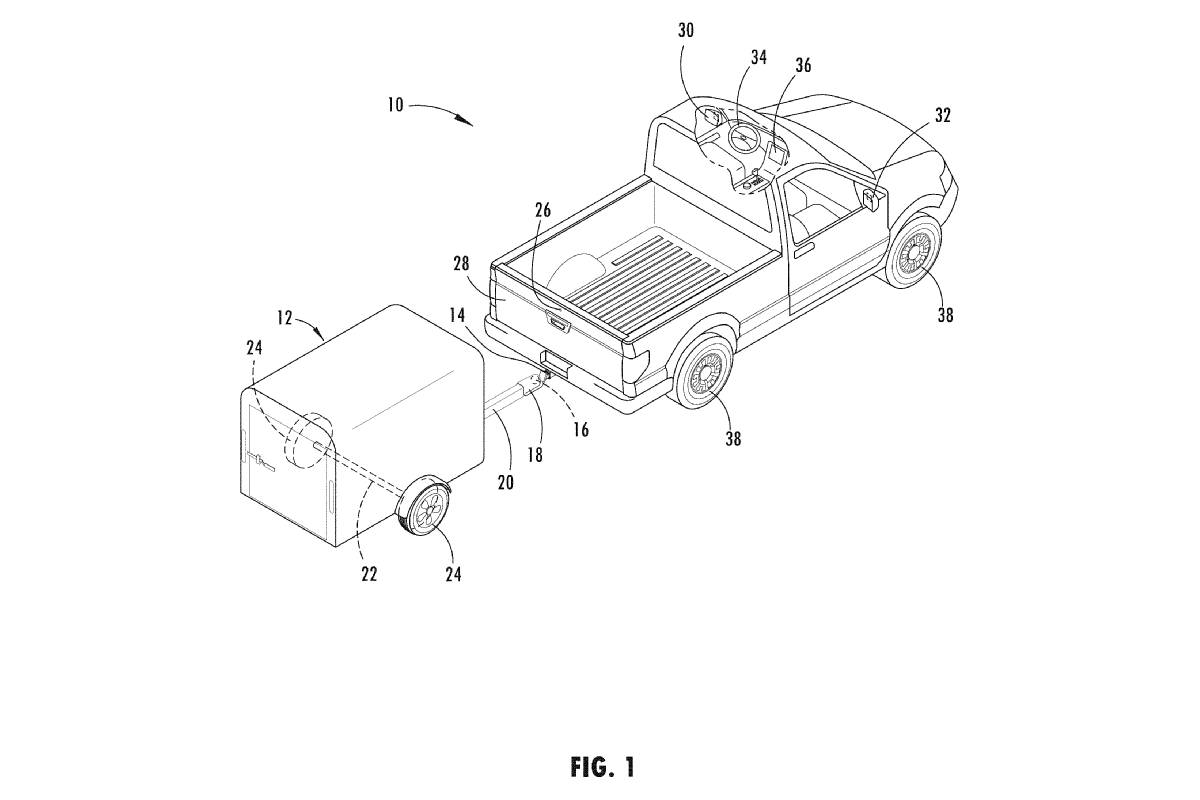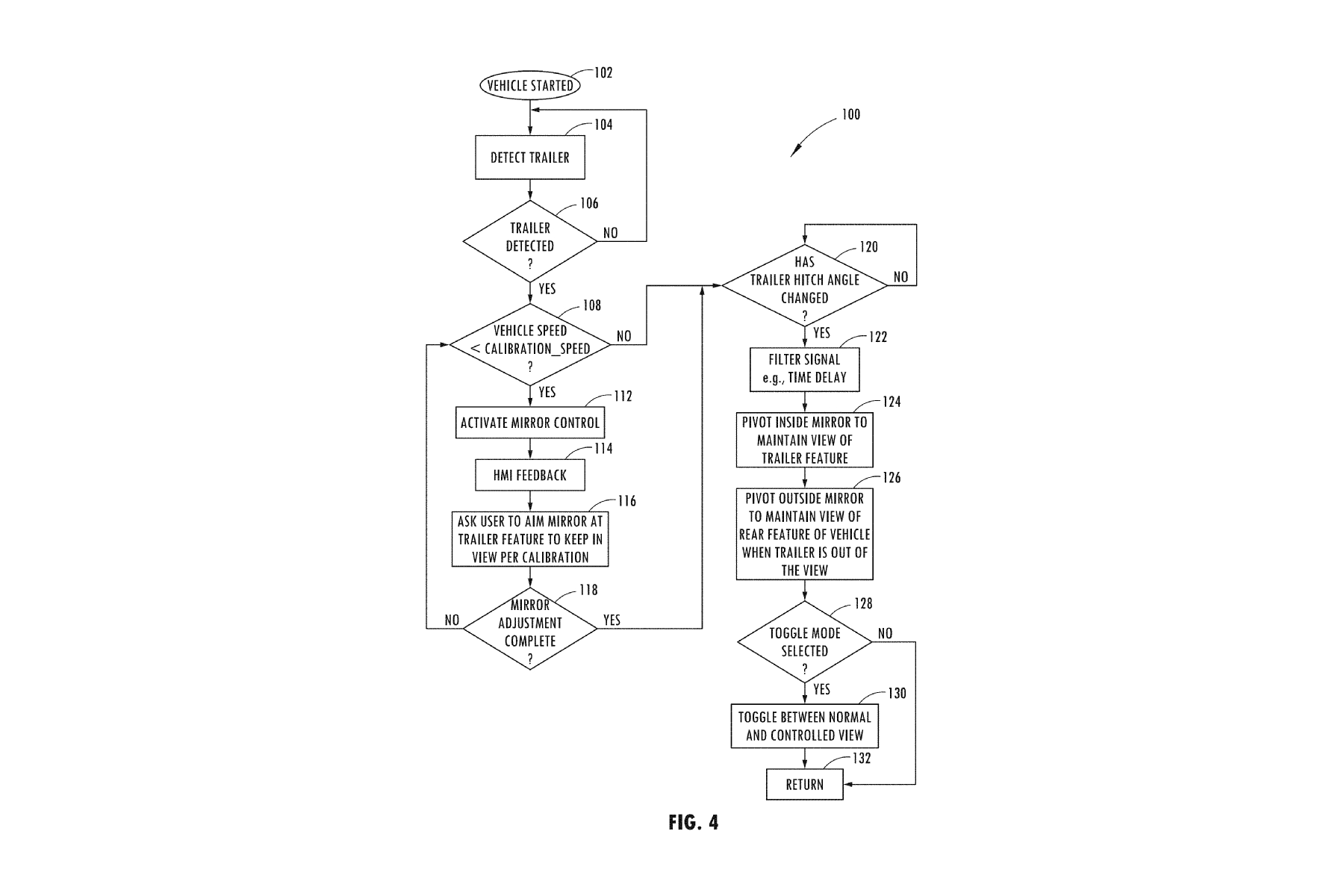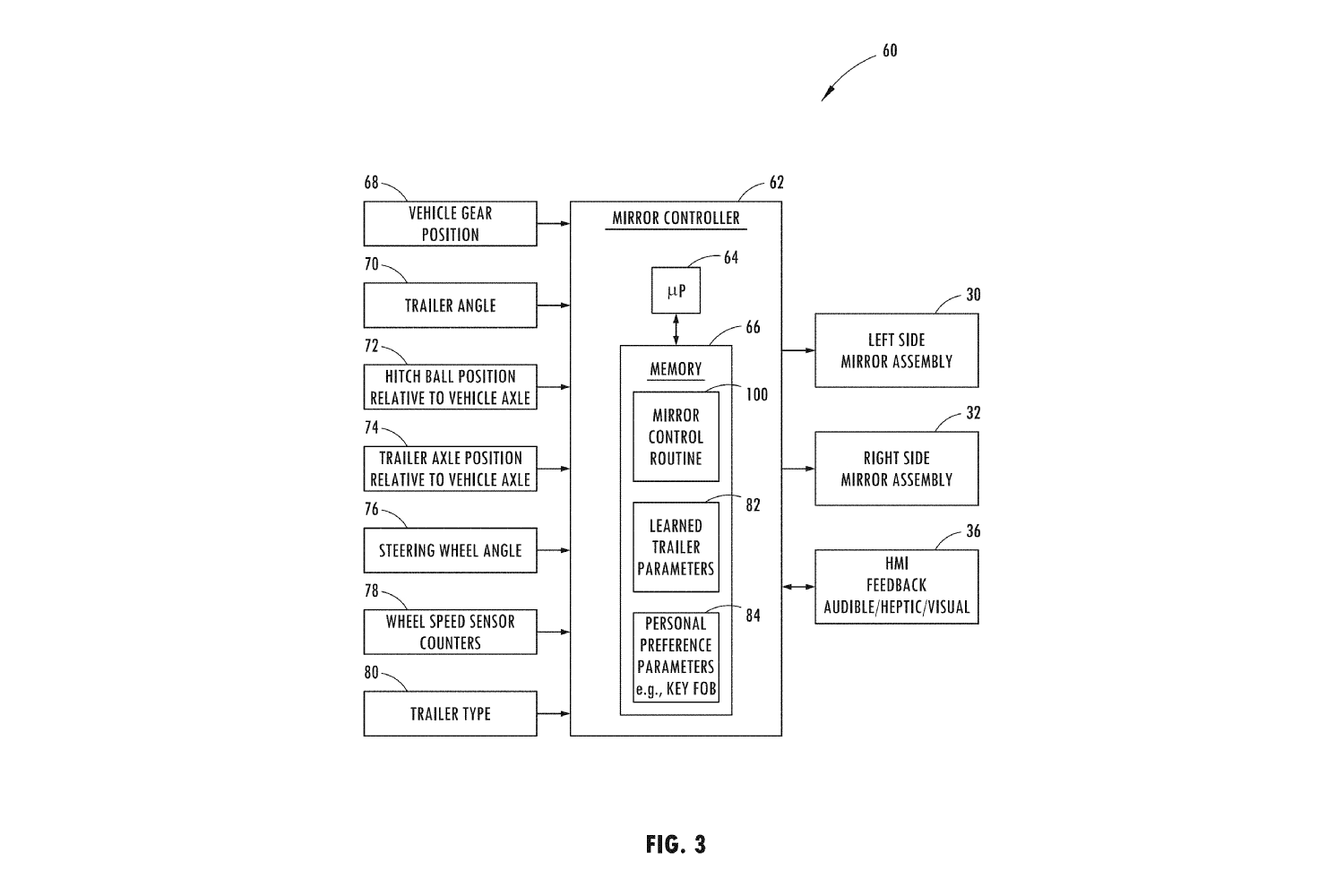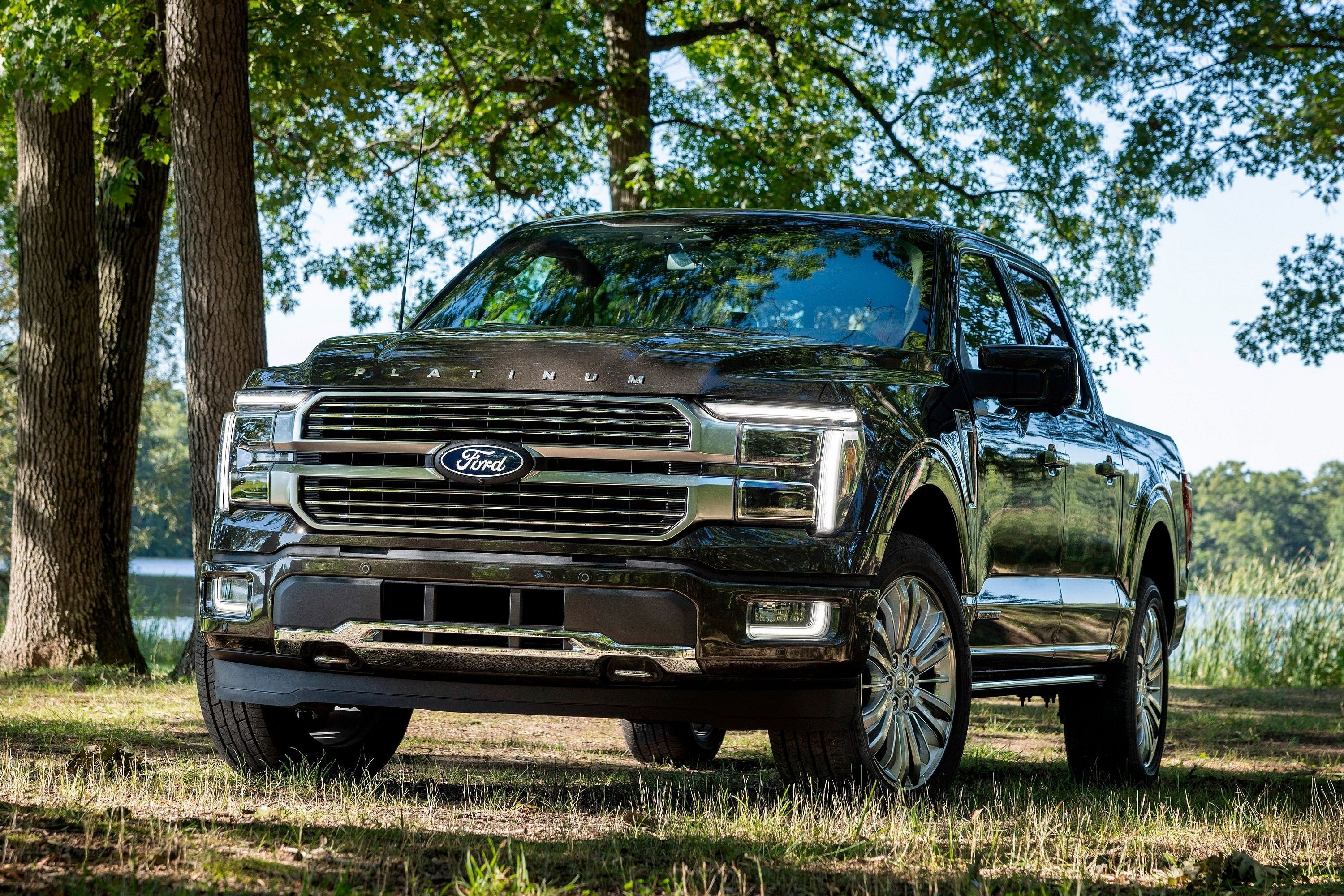
The Ford F-Series is the best-selling vehicle in America, largely because Ford understands the needs of its clients when it comes to towing. That's why Ford has developed a new auto-swiveling wing mirror system to mitigate blind spots when towing a trailer on everything from the Ford Escape to the Ford F-150.
In most cases, it won't even require much in the way of new hardware, as it would rely on the same motors used for power wing mirror adjustment, which is a staple on almost every modern car.
CarBuzz has uncovered a patent filed with the United States Patent And Trademark Office which describes wing mirrors that can independently adjust their angle to ensure the driver always has a perfect line of site with the extremities of the trailer.
The operating principle is very simple, automating an action that is commonplace among experienced tow vehicle drivers. Adjusting the exterior mirror positions to track the placement of a trailer's rear end is a time-honored technique that widens the field of vision in the mirrors, making it easier to see where the trailer is heading.
The only difference is that the driver won't need to adjust the mirrors themselves anymore because new logic sequences in the mirror control module will adjust them on the driver's behalf. This will adapt the mirrors' direction depending on the vehicle's steering angle and a tow hitch angle input, letting drivers keep track of the trailer while turning to see if it is at risk of collision with anything on the inside of the turn.
Most modern trucks and SUVs already have a plethora of cameras, display screens, and proximity sensors, and simply applying the existing technology in a new way enables expanded capabilities from something as simple as the mirror adjustment mechanism.
Of all the cameras at work, the reversing unit mounted on the tailgate will be the most important for this application. By repurposing the input from this camera, the mirror control system will be able to determine the trailer's angle relative to the tow vehicle, providing the first input for the active trailer reversing mirrors.
Next up is a calibration step, whereby the driver will select one or more features of the trailer that the mirror controller will use to determine the mirror adjustment angles. This will require the driver to adjust the aim of each mirror towards a trailer feature that is to be tracked in the mirrors while reversing. The rear trailer frame edge will do nicely here, but the aim can also be adjusted to track the trailer's wheels.
With this information in hand, the system will then adjust the aim of the side mirrors individually to keep the selected feature in view of the mirrors.
Turning the steering wheel to either side of the straight rearwards position will trigger the mirror adjustment subroutine, which will then see the corresponding side mirror angle itself outward to track the predetermined trailer feature. At the same time, the other mirror will turn inwards and angle itself down for a better view of the towing vehicle's rear end on the offside and the ground behind it.
These operating parameters can also be learned on the move, as the steering and trailer hitch angles and optical tracking of the trailer's front-end movement through the rear-view camera will provide inputs to the control system. From these inputs, the system could then calculate the trailer length and adapt its operating parameters accordingly.
And, should the trailer's calibration feature move outside the adjustment parameters for the side mirrors, the system will automatically show the trailer's wheel positions instead.
The system will also recognize trailers with which it had previously worked and preload the appropriate settings automatically.
These enhancements will make it much easier to move multiple trailers at different times with one vehicle and remove much of the need for driver input from the operation. The truck or SUV will simply know what to do without even asking the driver, and this will enable much easier operation for drivers who may not be completely familiar with using the technology.
Between this and Ford's automated trailer hitching tech, the Blue Oval is redefining the way we tow.

